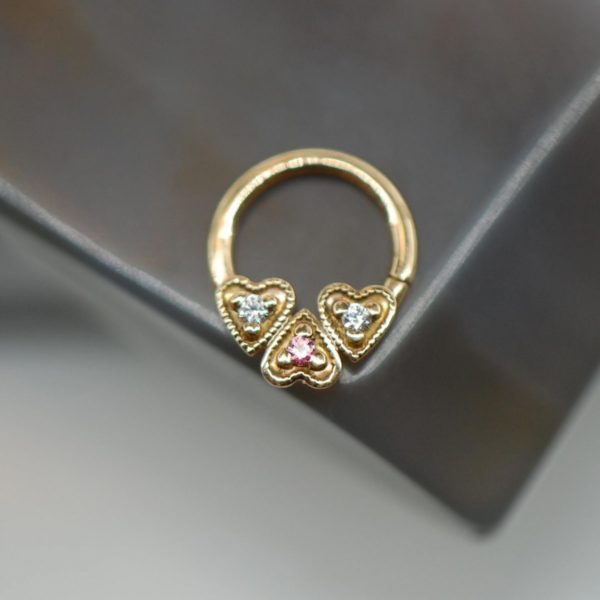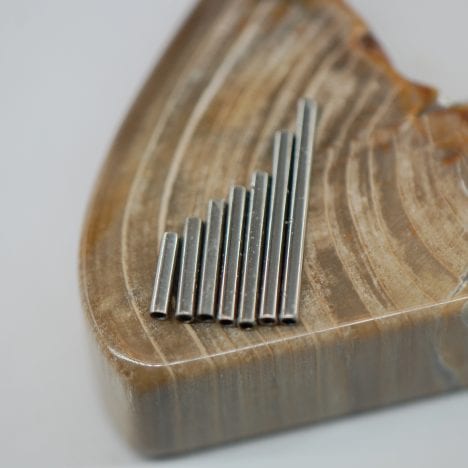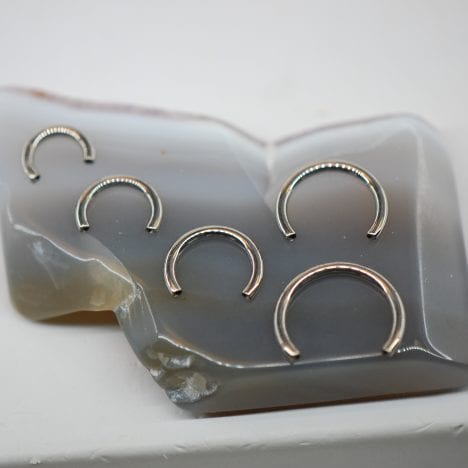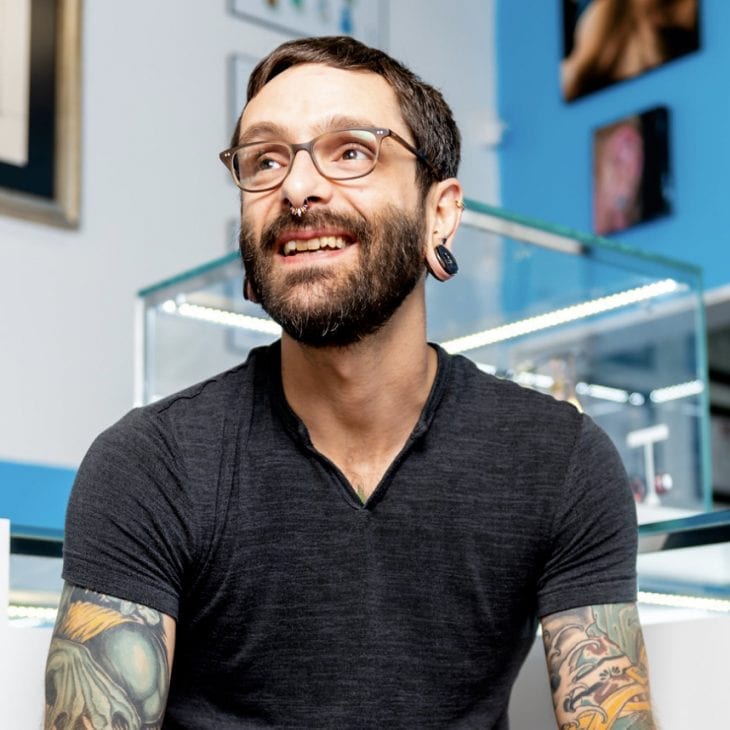Help! I have a bump on my piercing! I think it’s a keloid; how do I make it go away? Keloids (or keloid scarring) are unique type of scar tissue formation. They are a result of overgrowth of granulation tissue and collagen at the site of a healed or healing wound and tend to be firm, rubbery in feeling, and sometimes shiny. They can vary in appearance from one skin tone to the next, anywhere from a dark brown to even a red in color. A keloid scar is benign, but often accompanied by itching, pain, and changes in texture of the skin on or around it. Currently science believes keloids to have a genetic component, meaning keloid scars tend to run in families, and are genetically disposed. If your mother or father don’t keloid, the chances of you forming one are slim. Most people who do keloid know it by the time they are old enough to be pierced- many childhood cuts and scrapes, or vaccine injections have already left keloids and you are aware the condition runs in your family. Keloids are sometimes misdiagnosed as hypertrophic scars as well, which is also incorrect. Although there are clinical similarities between hypertrophic scars and keloids, there are some clinical, histological and epidemiological differences which matter greatly. For example, hypertrophic scarring occurs in 40-70% of people after surgeries, and 90% after burn wounds, and appear to occur randomly, with equal occurrence in any gender, race, or medical background. Keloid scars only form in 6-16% of cases, with a heavy predisposition to African Americans. Hypertrophic scars have a low reoccurance rate after treatment, and rarely extend far beyond the wound site, while keloids have a high rate of reoccurance and extend far, far beyond the wound. On a cellular level the scars are quite different as well.

So how does this all relate to your body piercing? Well, irritation bumps on piercings are often misdiagnosed as a keloid; but true keloids from body piercing are rare, and often have a more extreme appearance. The issue with this misdiagnosis is that there is a decent amount of misinformation available to the public via internet etc. Without proper knowledge, people turn to the millions of things online that claim a ‘cure’. Most often these suggestions are dangerous or potentially harmful to you and your piercing. This is because a puncture wound (such as a piercing) requires a different type of care and troubleshooting than a keloid requires. A true keloid needs a dermatologist or doctors help, and could even require surgery. The good news is what you have may instead be an irritation bump. These are small mounds of swelling next to a piercing, sometimes pink or fleshy, but easy to fix. We are here to help you troubleshoot and figure out the source of the irritation, and remove it. Once the piercing is no longer being irritated, the bump will go away with some time and care.

Irritation bumps have a few different causes, examples being:
- an incorrect angle on a piercing (causes pressure, creating bumps)
- low quality body jewelry such as “surgical steel”, silver, or mystery metals (causes a reaction with the skin, forming irritation)
- sleeping on your piercing, snagging it, or bumping it (causes trauma/wounding creating bumps)
- makeup, hair products, harsh tooth paste, and other skin products (can clog piercings and cause bumps)
There is no product or cure-all for fixing an irritation on a body piercing. Online you may read about tea tree oil, peroxide, neosporin, aspirin paste, dish soap, vinegar, tea, and all sorts of other random things people say you can put on your piercing to fix it. Ultimately though, these are
ALL unsafe in fact, tea tree oil has a huge reputation for ‘curing’ piercing bumps. Which is not only incorrect but dangerous. We have a whole article about why to never put teatree oil on your piercing thanks to this.) They usually are highly drying astringents which will attempt to burn the bump away but don’t address or solve the underlying issue. Without fixing the source of irritation, the bump will come right back, and sometimes these “DIY” solutions can even cause allergic reactions or leave scars far worse than the original irritation. If you are having an issue with your piercing, we encourage clients to either come in, or call/email us so we can provide the professional help required and find the best, most effective solution. In short, a small bump on your piercing is nothing to stress over. These little irritations are usually easy to resolve with the aid of a professional. Notice an issue with your piercing? Go see your local reputable piercer to learn how to help heal it, don’t ask your friends or the internet!
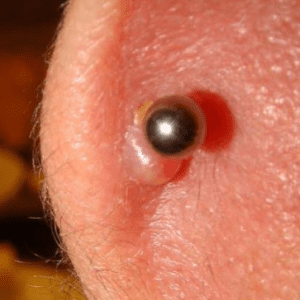
Peacock EE, Jr, Madden JW, Trier WC. Biologic basis for the treatment of keloids and hypertrophic scars. South Med J. 1970;63:755–60.
Slemp AE, Kirschner RE. Keloids and scars: a review of keloids and scars, their pathogenesis, risk factors, and management. Curr Opin Pediatr. 2006;18:396–402.
Al-Attar A, et al. Keloid pathogenesis and treatment. Plast Reconstr Surg. 2006;117:286–300
Smith CJ, Smith JC, Finn MC. The possible role of mast cells (allergy) in the production of keloid and hypertrophic scarring. J Burn Care Rehabil.1987;8:126–31.
Brown JJ, Bayat A. Genetic susceptibility to raised dermal scarring. Br J Dermatol. 2009;161:8–18
